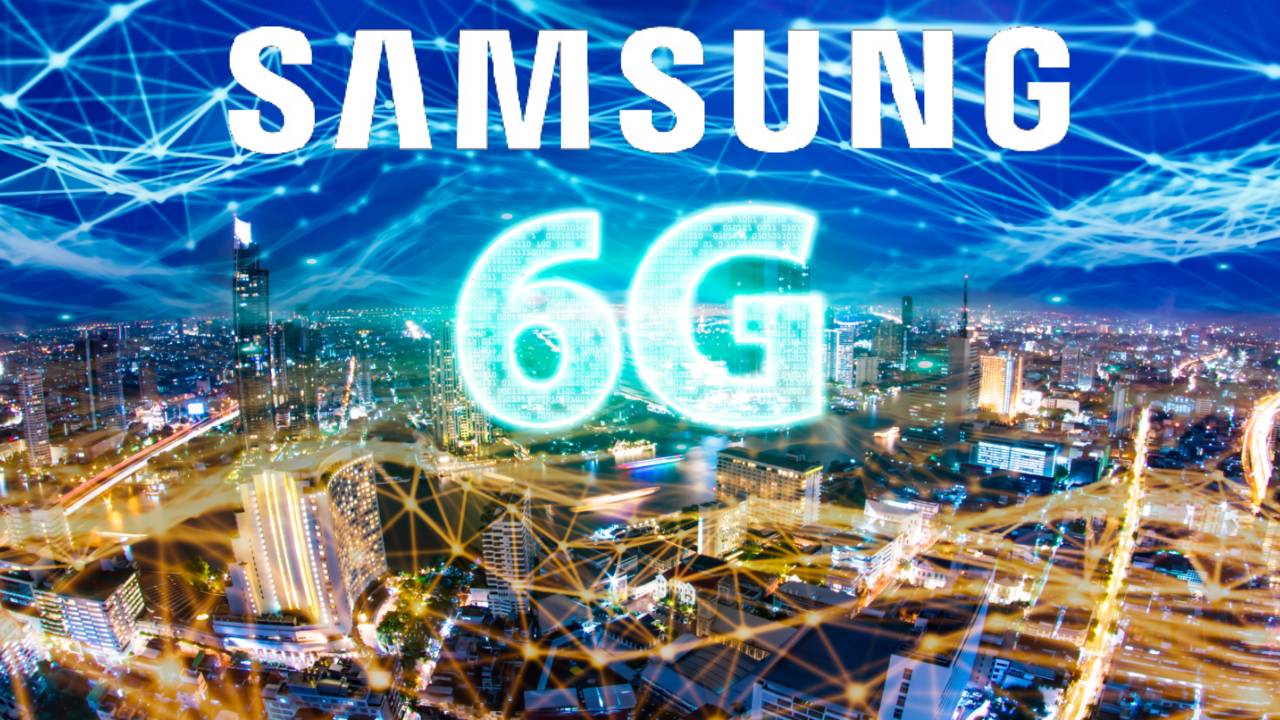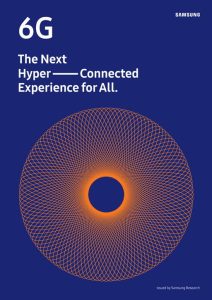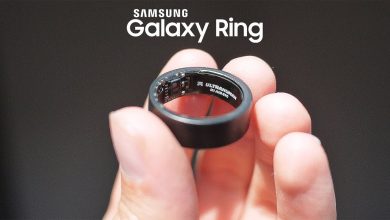SAMSUNG 6G – The First Ever Contender Of 6G technology !!!
Samsung 6G: Samsung presents its vision for the upcoming generation of communications technology in its 6G White Paper. Samsung wants to make every aspect of life the next hyper-connected experience with 6G. Samsung Research, the cutting-edge R&D center under Samsung Electronics’ SET Business, is working to expedite 6G research.
Contents
- 1 Samsung 6G White Paper; The Vision Towards Next-Generation Communication 6G Technology!
- 1.1 What is 6G Technology?
- 1.2 Architectural Requirements for 6G
- 1.3 Trustworthiness Requirements for 6G
- 1.4 Candidate Technologies for 6G
- 1.5 Pushing the Boundaries: Terahertz Frequencies and Beyond
- 1.6 Reconfigurable Intelligent Surfaces (RIS) and Beamforming
- 1.7 The Role of AI in 6G
- 1.8 The Roadmap to 6G: Collaboration and Standardization
Samsung 6G White Paper; The Vision Towards Next-Generation Communication 6G Technology!
Samsung has always been at the forefront of technological advancements, and now they are gearing up to revolutionize the mobile industry once again with their groundbreaking 6G technology. In this article, we will explore the emergence of Samsung 6G as the first contender in the race towards the next generation of wireless connectivity. We will delve into the key features and advancements of Samsung 6G, its potential impact on the tech world, and the significance of the recently released 6G whitepaper.
n the ever-evolving landscape of technology, the race to innovate and push boundaries never stops. While 5G networks are becoming increasingly prevalent, companies like Samsung are already setting their sights on the next generation of communication technology: 6G. In this article, we will explore the groundbreaking potential of 6G technology as outlined in Samsung’s whitepaper, shedding light on the advancements that await us in the near future.
What is 6G Technology?
6G technology is anticipated to bring advancements in data speed, capacity, latency, and connectivity compared to its predecessor, 5G. It may involve technologies such as terahertz frequency bands, advanced artificial intelligence, holographic communications, and other innovations. Keep in mind that details and specifications may evolve as research and development progress, so it’s recommended to check the latest sources for the most up-to-date information on 6G technology.
Compare 6G with the previous generation (5G) to highlight advancements.
Performance Requirements for 6G: While 5G focused on performance aspects, Samsung defines three categories of requirements to realize the full potential of 6G services: performance, architectural, and trustworthiness requirements. In terms of performance, Samsung aims for a peak data rate of 1,000 Gbps (gigabits per second) and air latency of less than 100 microseconds (μs). These requirements are 50 times the peak data rate and one-tenth the latency of 5G. The table below illustrates a comparison of key performance requirements between 6G and 5G.
| Performance Requirement | 6G | 5G |
|---|---|---|
| Peak Data Rate | 1,000 Gbps | 20 Gbps |
| Air Latency | <100 μs | <1 ms |
Vision for Samsung 6G
Discuss Samsung’s vision for 6G technology: Samsung, a frontrunner in technological innovation, has laid out its vision for 6G in its whitepaper titled “The Next Hyper-Connected Experience for All.” The company aims to bring a hyper-connected experience to every aspect of life, promising advanced services such as immersive extended reality (XR), high-fidelity mobile holograms, and digital replicas. While 5G is still in its early stages of commercialization, Samsung believes it’s never too early to start preparing for the next generation of communication technology.
Samsung’s 6G Whitepaper:
Blueprint for the Future: Samsung has taken a proactive approach in shaping the discourse around 6G technology by releasing a comprehensive whitepaper. Delve into the details of Samsung’s vision, strategies, and key insights outlined in the 6G whitepaper. Gain valuable insights into the company’s roadmap for the deployment of 6G networks and how it envisions the integration of 6G into our daily lives.
- Reference Samsung’s 6G whitepaper and any official announcements.
-
Source: The information presented in this article is based on the following sources: Samsung’s 6G Whitepaper or Research area 6G Vision
Samsung Galaxy 6G: A Glimpse into the Future
The Timeline for 6G: According to Samsung’s whitepaper, the research and development of 6G technologies have already begun. The company anticipates that the completion of the 6G standard and its earliest commercialization date could be as early as 2028, with mass commercialization expected around 2030. This timeline aligns with the typical timeframe of around 10 years from research to commercialization for new generations of communication technology.
Architectural Requirements for 6G
In addition to performance requirements, Samsung highlights the importance of addressing architectural challenges for 6G. These challenges include the limited computation capability of mobile devices, the integration of AI from the initial phase of technology development, and the flexible integration of new network entities. By resolving these issues, 6G can provide a seamless and efficient network architecture that supports the diverse needs of users and devices.
Trustworthiness Requirements for 6G
As technology becomes more integrated into our lives, ensuring trustworthiness in communication systems becomes paramount. Samsung s24 recognizes the need to address security and privacy concerns arising from the widespread use of user data and AI technologies. Trustworthiness requirements for 6G aim to establish robust security measures and privacy safeguards to protect users and their sensitive information.
Candidate Technologies for 6G
Samsung’s whitepaper introduces several candidate technologies that could be essential to meet the requirements of 6G. These technologies include the use of terahertz (THz) frequency bands, advanced antenna technologies for improved signal coverage, novel duplex technologies, network topology evolution, spectrum sharing for efficient frequency utilization, and the integration of AI in wireless communications. These advancements will pave the way for faster, more reliable, and more efficient communication networks.
Pushing the Boundaries: Terahertz Frequencies and Beyond
To achieve the ambitious goals of 6G, Samsung is exploring the use of terahertz (THz) frequencies, which surpass the frequencies currently utilized by 5G networks. Terahertz frequencies offer the potential for ultra-high-speed data rates, reaching up to 1 Terabit per second (Tbps), 50 times faster than 5G. However, there are challenges associated with the propagation and reception of frequencies beyond 100 GHz, including path loss, hardware limitations, advanced antenna requirements, and the need for RF channel optimization. Samsung aims to overcome these challenges through research and development.
Reconfigurable Intelligent Surfaces (RIS) and Beamforming
To address the obstacles faced in achieving reliable communication at higher frequencies, Samsung is exploring the use of reconfigurable intelligent surfaces (RIS) and advanced beamforming techniques. RIS, also known as metasurfaces, can enhance signal strength and steer or reflect wireless signals to desired directions. By utilizing RIS, Samsung aims to overcome the limitations imposed by line-of-sight obstacles and improve the coverage and reliability of high-frequency signals, such as millimeter-wave (mmWave) transmissions.
The Role of AI in 6G
Artificial intelligence (AI) plays a crucial role in unlocking the full potential of 6G technology. Samsung is researching AI-based solutions to compensate for signal distortions caused by the nonlinearity of power amplifiers, improving coverage and transmission speed. Additionally, AI can optimize energy consumption in base stations, leading to more efficient network operations. By leveraging the power of AI, 6G networks can provide enhanced performance, reliability, and energy efficiency.
The Roadmap to 6G: Collaboration and Standardization
The journey towards 6G requires collaboration and standardization across various stakeholders, including industry, academia, and government. Samsung is committed to leading the standardization of 6G by sharing its research findings and working closely with partners to drive innovation. The company’s efforts extend beyond developing technologies to shaping regulations and optimizing spectrum utilization for efficient and flexible support of 6G services.
The future of communication holds immense potential with the advent of 6G technology. Samsung’s whitepaper outlines a vision for hyper-connected experiences, advanced services, and unprecedented performance in the realm of wireless communication. By pushing the boundaries of technology, harnessing the power of AI, and exploring new frequencies and architectural advancements, Samsung aims to bring the next generation of communication to every corner of life. As we embark on this journey towards 6G, collaboration, research, and innovation will pave the way for a new era of connectivity and possibilities.
By highlighting Samsung’s entry into the 6G technology race and the significance of their 6G whitepaper, this article aims to provide readers with insights into the future of wireless connectivity. Samsung 6G has the potential to revolutionize industries, enable new applications, and shape the way we experience technology. As we move closer to the 6G world, Samsung is leading the way towards a more connected and immersive future.











